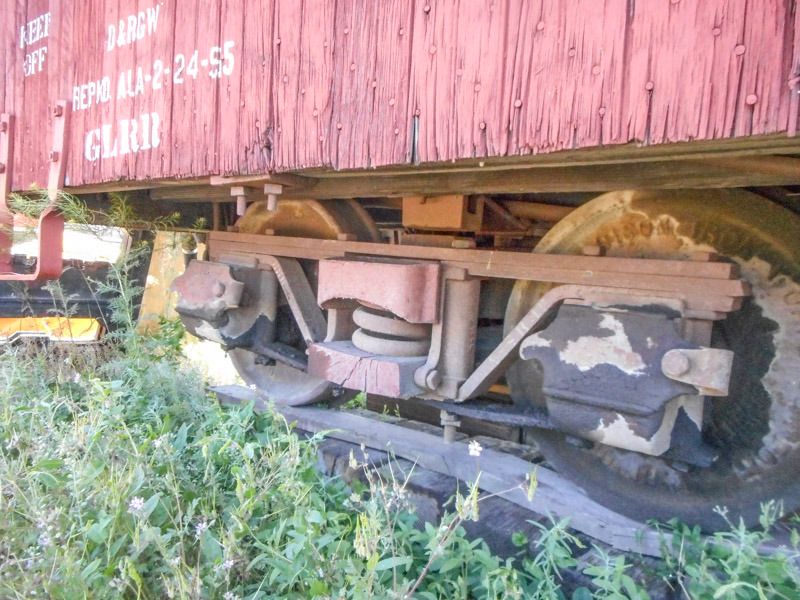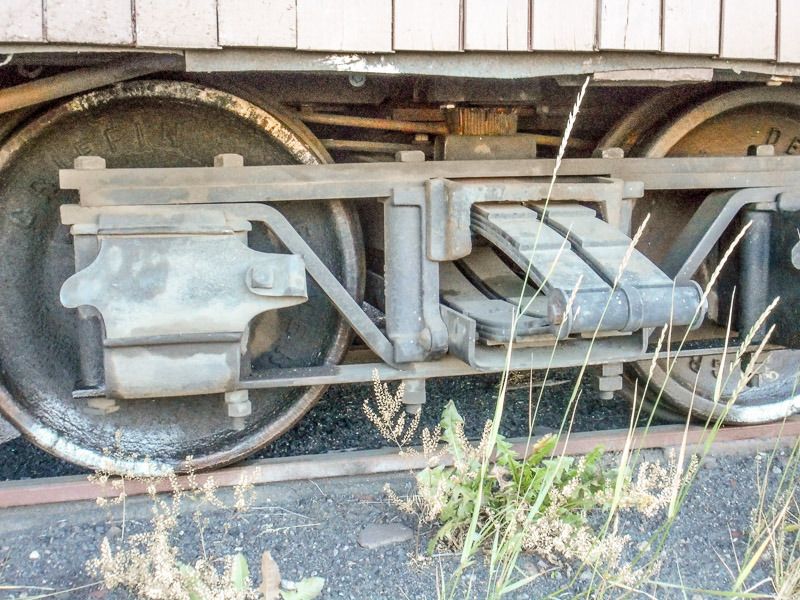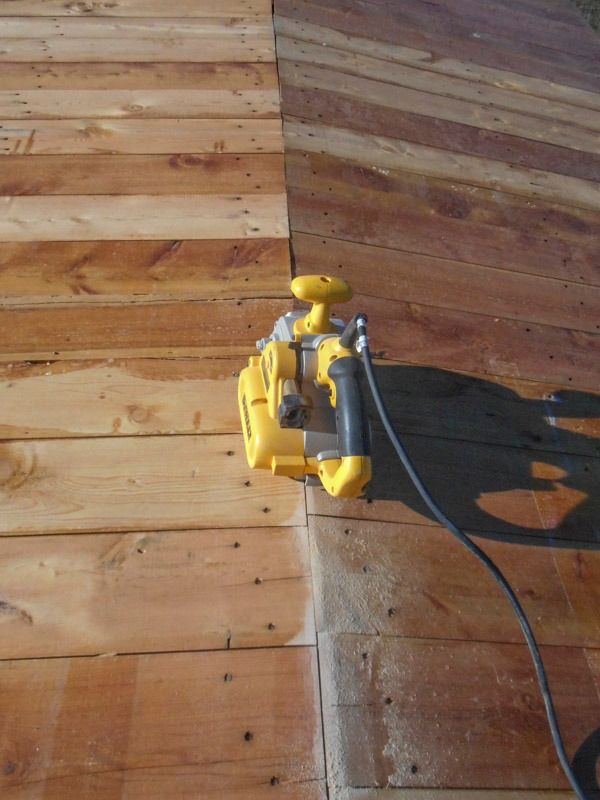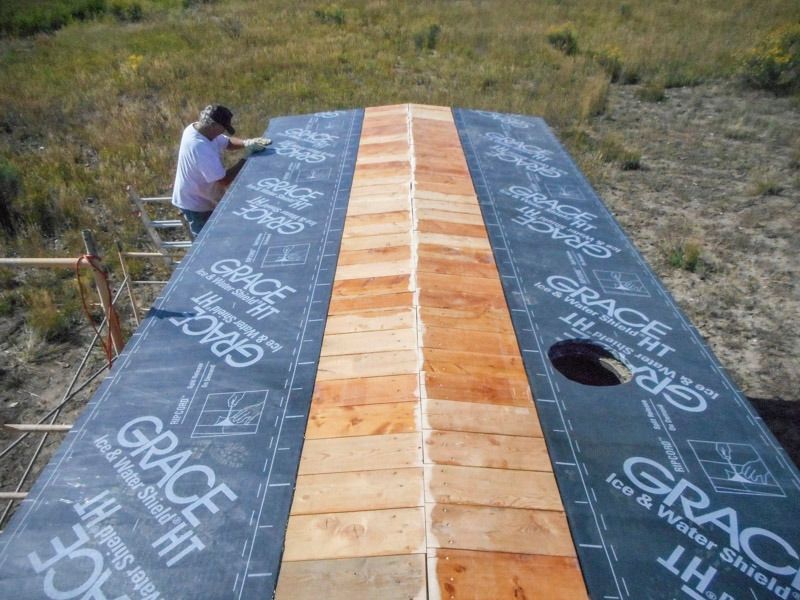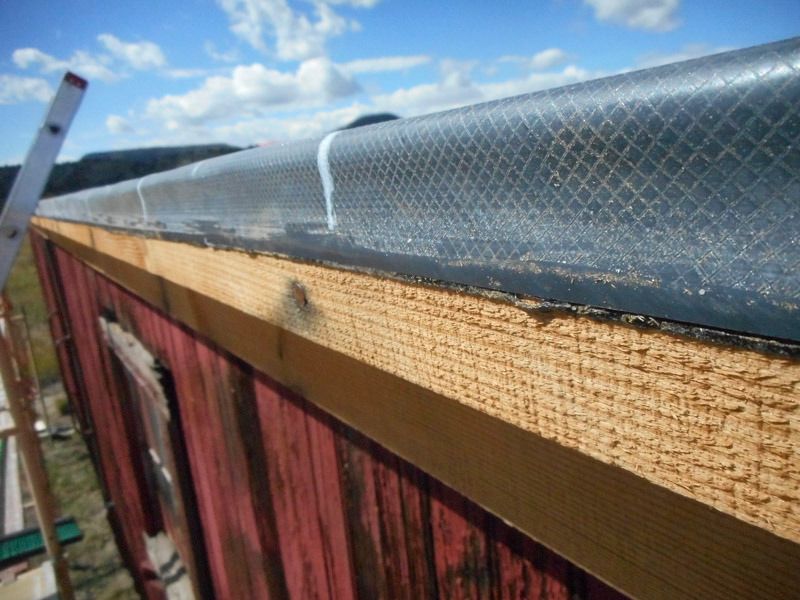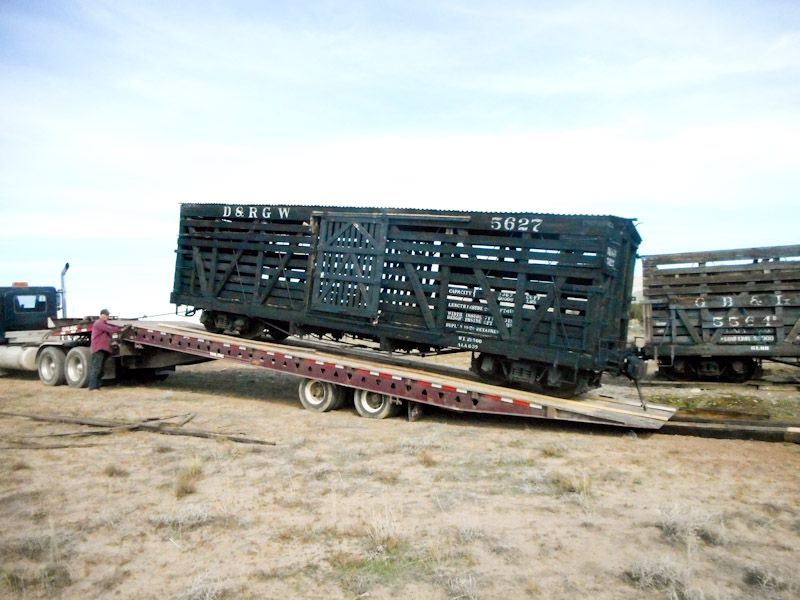More progress on the roof…
The final layer on this car is a layer of good old fashion asphalt roll roofing.
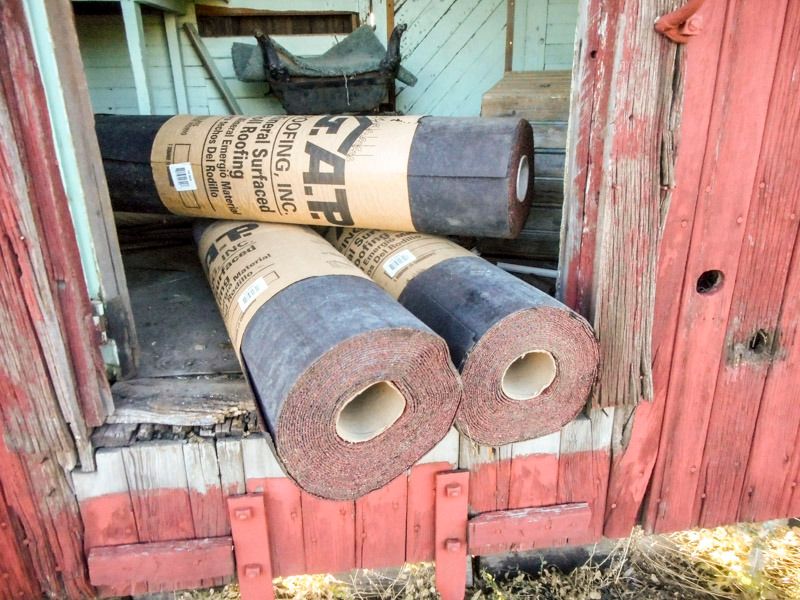
The original 4000 series boxcars had a very standard double layer wood roof, with “Tar Paper” in-between. Double layer wood roofs were nortorious for leaking, From the very first one made to the very last one, they leaked! When 4432 was assigned to work service duty, As was all work cars on the D&RGW, they got a extra layer to keep them dry. Box car red, was the color of choice. So to be historically correct, Red it is. BTW each roll 36 in. wide, covers 100 Sq.Ft. and they are really heavy to carry up the ladder to the roof.
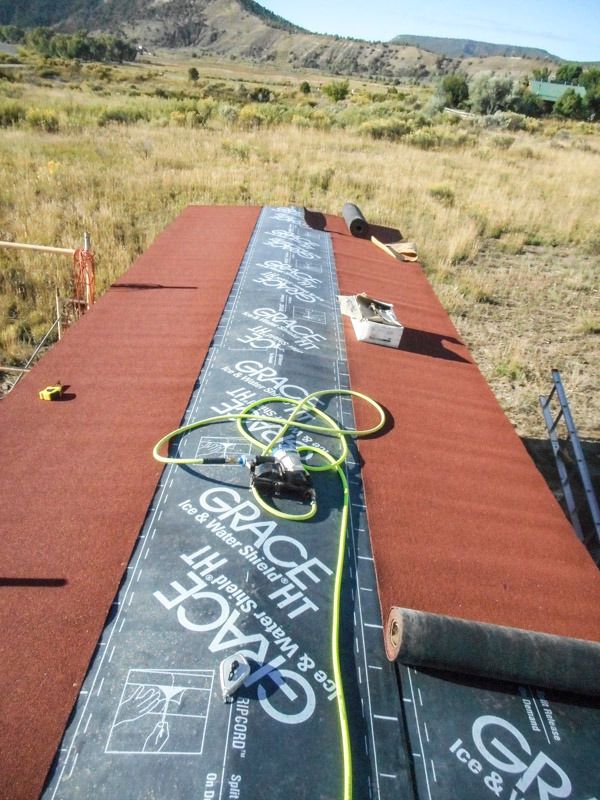
Yes we cheated!! My Air roof nailer, sure made the job a whole lot easer, and faster. And not a single finger was smushed in the process.

Note: We did not yet cut the hole for the smoke jack, as of now the roof is water tight. We are not yet ready to install the stove, so it will come latter, We did leave the yellow tape measure on the spot as a reminder to not step right there.
The edges were folded over and finished nailed all along the sides. Scott Gibbs does the honors on this section.
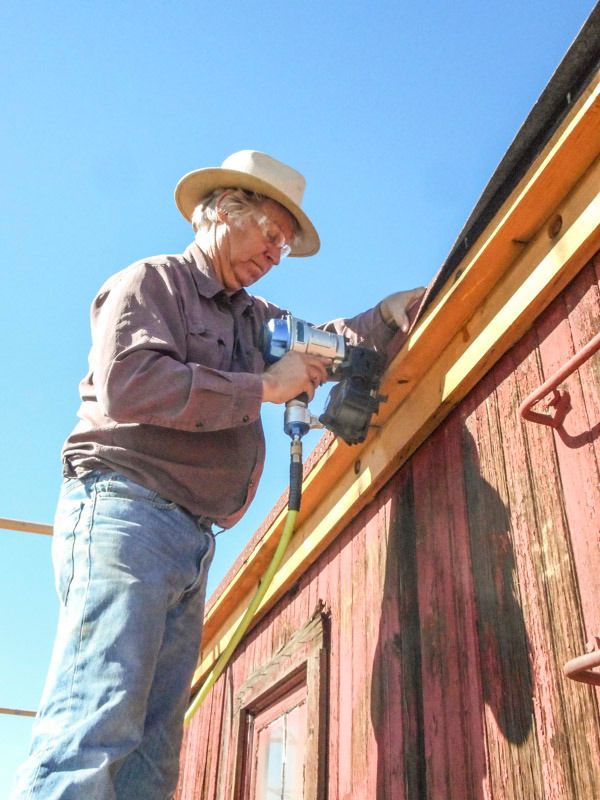
And this is the finished edge.
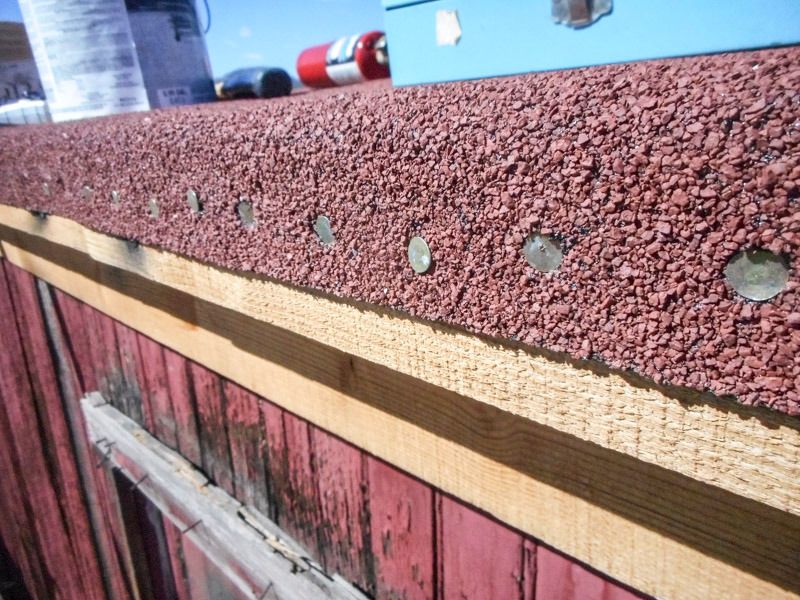
And the ends finished in the same manner to be historically correct.
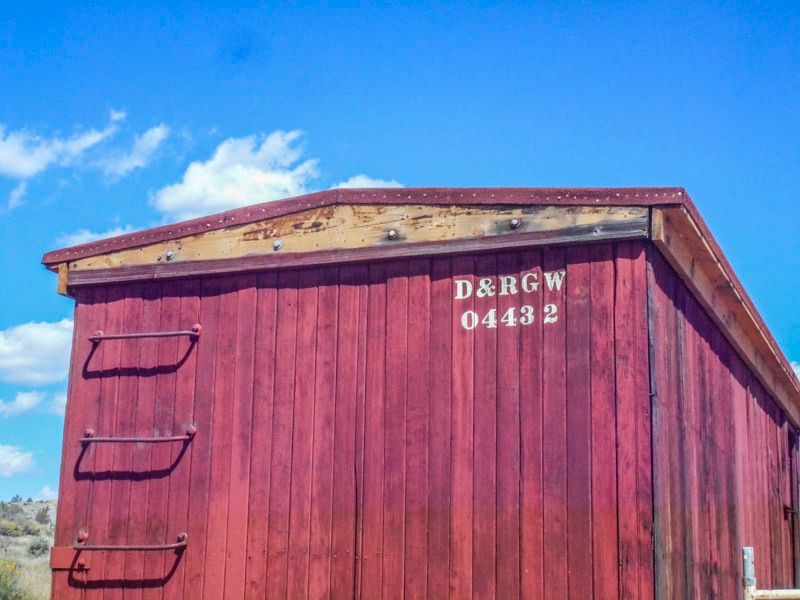
And that my friends, is how we replaced the roof on a 116 year old boxcar. We really think that it will stay dry inside for near ever with the waterproofing that we gave it. Now the roll roofing, we expect to give us about 10-12 years of service before it needs replacing again. The fact that there will be no abuse by walking on it should help extend it’s life.
Edit: And the finished roof and the car. (photo by Scott Gibbs)
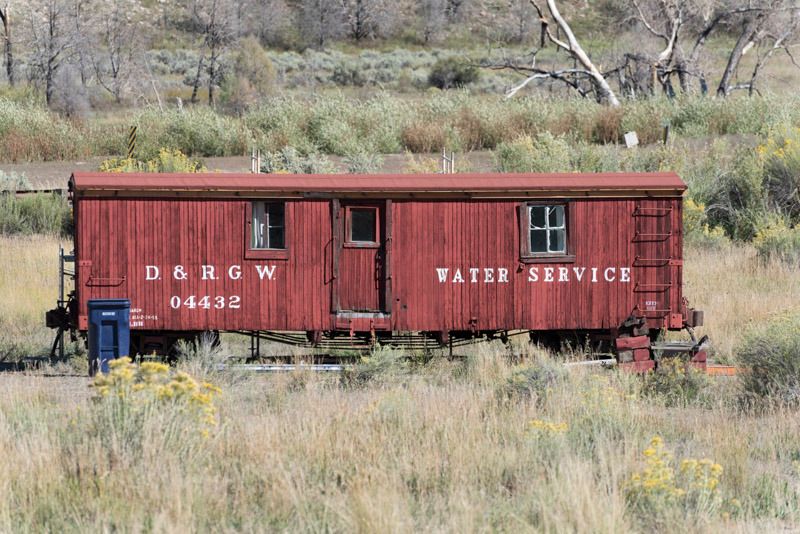
UP NEXT: the roof walks, and brake staff. New wood has been ordered for the walks and several of the braces that needed to be replaced.
